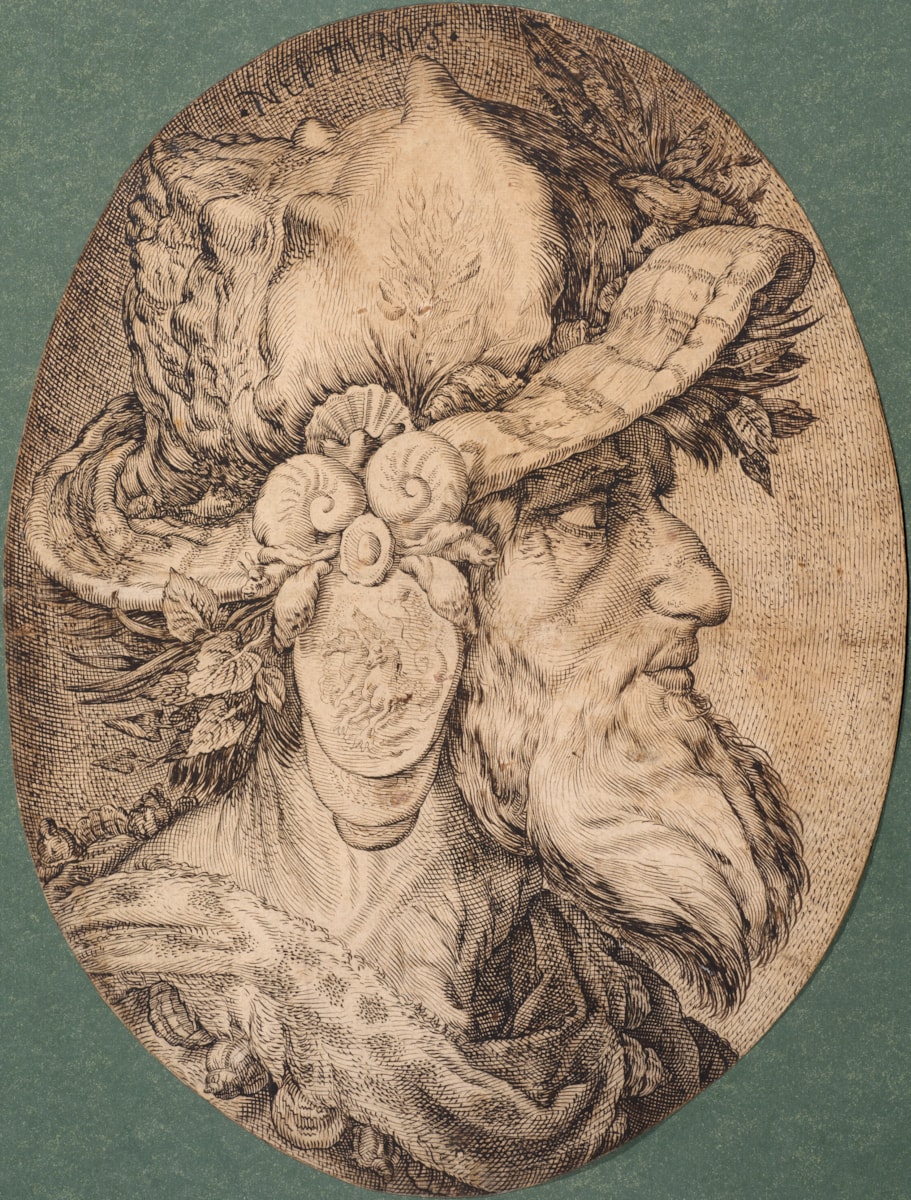
circle of Jacob Matham (Haarlem 1571 - Haarlem 1631)
Neptune
Description:
inscribed, in brown ink (recto): NEPTUNUS; inscribed, in brown ink (verso): 26. / No. 10; inscribed, in black chalk (verso): C.; inscribed, in pencil (verso): Dessin à la plume / H. Goltzius
pen and brown ink
443 x 335 mm (oval)
Provenance:
Oger-Blanchet, Paris: 20 June 2018, Lot 5 (as ‘Prague School, 17th century, follower of Hendrik Goltzius’)
Private collection, UK
Note:
Jacob Matham's (1571-1631) mother married the esteemed Haarlem master Hendrick Goltzius (1558-1617) when Matham was just seven years old. His training and professional life were shaped thereafter by his successful and illustrious stepfather. The present drawing, depicting the sea god Neptune, is one of three known versions of the subject. The first, now in the Albertina in Vienna, shows the god’s head in the reverse sense, and was created in 1602 as a showpiece of the artist's skill following his return from a tour of Italy and his acceptance into the Guild of Saint Luke in Haarlem. The second drawing, produced in 1626, is in the Staatliches Museum in Schwerin. The reasons for Matham revisiting the subject over 20 years after the first are unclear but indicate the success of the first rendition and his fascination with the subject. In the Schwerin drawing Matham reversed the orientation of the head, and slightly altered the ornamentation of the helmet, turning the crustacean on the earpiece into a pair of seahorses, for example. The present drawing is of a comparable size to the Schwerin sheet and retains the same decorative ornamentation, although it is less fluid in the linework and is more reliant on stippling than on line to the right of the medallion background.
Oval in format, with circular lines to mimic a concave mirror frame, Neptune is shown as a wizened figure with a long beard, a large nose, and a fantastical helmet in the shape of an enormous conch shell. Snails, feathers, and shells adorn the headpiece and sea plants cushion the heavy shell against the god's head. A string of shells forms a necklace.
Matham’s illusionistic technique is known as Penwerk in Dutch, or Federkunststück in German. The technique was advanced by Matham's stepfather during the 1580s, to simulate the effect and virtuosity of an engraving while preserving the unique character of a drawing. It required a virtuosic control of pen and ink to create swelled lines that terminate in tapered points, producing the appearance of contour. Here, the artist added crossed lines to form lozenges and create volume, lifting the face away from the patterned lines of the background. Flicks and dots throughout the composition augment the linework to build texture as needed. Although chalk or charcoal may have been used sparingly and rubbed away, none of the three drawings reveal any trace of underdrawing, suggesting an apparently freehand execution.
Please contact us for a full catalogue entry.
